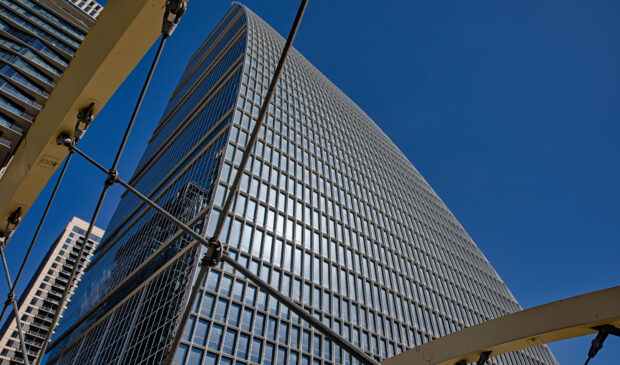Audit finds office-to-residential conversions a bad fit for most local real estate
Monday, June 3, 2024 by
Chad Swiatecki A recent audit by the Office of the City Auditor looking at the possibilities for converting vacant office spaces into housing stock has found the practice known as adaptive reuse is likely a poor fit for office buildings mostly constructed in the last 10 to 20 years.
The audit, which was released in April, queried eight city departments including the Development Services Department and the Housing Department. It was requested by Mayor Pro Tem Leslie Pool and Council Member Mackenzie Kelly, who had seen other large cities such as Dallas and Washington, D.C., convert older office buildings with low occupancy into residential units.
The city’s need for housing at all levels – affordable, workforce, market-rate and luxury – and a persistent office vacancy rate of around 20 percent has caused some stakeholders to look at adaptive reuse as an answer to both problems.
Last month, the Austin Monitor looked at the issue and found real estate experts had drawn essentially the same conclusions as the audit. Issues with centrally located bathrooms and HVAC systems, poor access to sunlight in buildings with large floor plates, and the large construction debt still in play for newer buildings all weighed against the possibility of converting office uses into residential units.
The audit found that the difference in zoning restrictions between office and residential projects is another obstacle in pursuing conversions. It also said local, state and federal governments could encourage the process through a mix of incentives including subsidies and tax breaks, along with easing zoning restrictions and expediting the development review process.
The auditors found 16 vacant office properties that were for sale within the central business district, most of which were constructed prior to 1990, with 13 totaling less than 30,000 square feet. The only office-to-residential project found in Austin was the Brown Building Lofts downtown, which was converted to 90 units in 2004.
Research into the financial and other considerations involved in adaptive reuse found it can be preferable to demolishing an aged project, but the resulting units typically need to fetch luxury market prices to justify the redevelopment costs.
One possible path to redevelopment for vacant or under-occupied office projects is converting the space into commercial real estate for lease to stores, restaurants or studio spaces. The audit notes, “These conversions may have fewer barriers than converting to residential units. When considering building codes, office buildings generally have the least restrictive requirements, followed by mercantile spaces (like stores and restaurants), residential housing, and lastly, hotels and hospitals. Accordingly, fewer changes would need to be made when converting from offices to mercantile spaces than when converting to residences.”
With entire recent office projects in the downtown area sitting either vacant or very sparsely occupied by people with a sublease, downtown advocates have turned their eyes toward how to manage the low number of office workers frequenting other businesses in the area. The Downtown Austin Alliance recently announced its space activation program, which will provide vacant ground-level offices or storefronts to artists and musicians for short-term use and activations.
In a recent summit on the city’s affordability problem, Hannah Rangel, DAA’s vice president of built environment, said the city should look to support new projects with higher levels of affordable units, along with adding dense housing of all kinds to projects located near transit corridors.
“It’s not buzz, it’s noise that is distracting us from some of the bigger-picture ideas and solutions. Adaptive reuse, converting office to residential, is totally a thing. We’ve seen it done. We’ve seen it done in other cities. For Austin, we do not think it is a very good fit,” she said. “The downtown core has a very young building stock. Our downtown has doubled in the past decade. When we were talking about some of those vacancies in office buildings, these are big new towers that still have a lot of debt and equity attached to them and business plans and pro formas and also will probably have floor plates that are not really appropriate for conversion.”
Photo made available through a Creative Commons license.
The Austin Monitor’s work is made possible by donations from the community. Though our reporting covers donors from time to time, we are careful to keep business and editorial efforts separate while maintaining transparency. A complete list of donors is available here, and our code of ethics is explained here.
You're a community leader
And we’re honored you look to us for serious, in-depth news. You know a strong community needs local and dedicated watchdog reporting. We’re here for you and that won’t change. Now will you take the powerful next step and support our nonprofit news organization?








